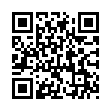|
Эта публикация цитируется в 29 научных статьях (всего в 29 статьях)
Factor-Group-Generated Polar Spaces and (Multi-)Qudits
Hans Havlicekab, Boris Odehnalb, Metod Sanigaac
a Center for Interdisciplineary Research (ZiF), University of Bielefeld, D-33615 Bielefeld, Germany
b Institut für Diskrete Mathematik und Geometrie, Technische Universität Wien, Wiedner Hauptstraße 8-10/104, A-1040 Wien, Austria
c Astronomical Institute, Slovak Academy of Sciences, SK-05960 Tatranská Lomnica, Slovak Republic
Аннотация:
Recently, a number of interesting relations have been discovered between generalised Pauli/Dirac groups and certain finite geometries. Here, we succeeded in finding a general unifying framework for all these relations. We
introduce gradually necessary and sufficient conditions to be met in order to carry out the following programme: Given a group $\mathbf G$, we first construct vector spaces over $\mathrm{GF}(p)$, $p$ a prime, by factorising $\mathbf G$ over appropriate normal subgroups. Then, by expressing $\mathrm{GF}(p)$ in terms of the commutator subgroup of $\mathbf G$, we construct alternating bilinear forms, which reflect whether or not two elements of $\mathbf G$ commute. Restricting to $p=2$, we search for “refinements” in terms of quadratic forms, which capture the fact whether or not the order of an element of $\mathbf G$ is $\leq 2$. Such
factor-group-generated vector spaces admit a natural reinterpretation in the language of symplectic and orthogonal polar spaces, where each point becomes a “condensation” of several distinct elements of
$\mathbf G$. Finally, several well-known physical examples (single- and two-qubit Pauli groups, both the real
and complex case) are worked out in detail to illustrate the fine traits of the formalism.
Ключевые слова:
groups; symplectic and orthogonal polar spaces; geometry of generalised Pauli groups.
Поступила: 19 августа 2009 г.; в окончательном варианте 2 октября 2009 г.; опубликована 13 октября 2009 г.
Образец цитирования:
Hans Havlicek, Boris Odehnal, Metod Saniga, “Factor-Group-Generated Polar Spaces and (Multi-)Qudits”, SIGMA, 5 (2009), 096, 15 pp.
Образцы ссылок на эту страницу:
https://www.mathnet.ru/rus/sigma442 https://www.mathnet.ru/rus/sigma/v5/p96
|

| Статистика просмотров: |
| Страница аннотации: | 437 | | PDF полного текста: | 70 | | Список литературы: | 62 |
|




 Обратная связь:
Обратная связь: Пользовательское соглашение
Пользовательское соглашение
 Регистрация посетителей портала
Регистрация посетителей портала Логотипы
Логотипы








 Цитирование в формате
Цитирование в формате 
